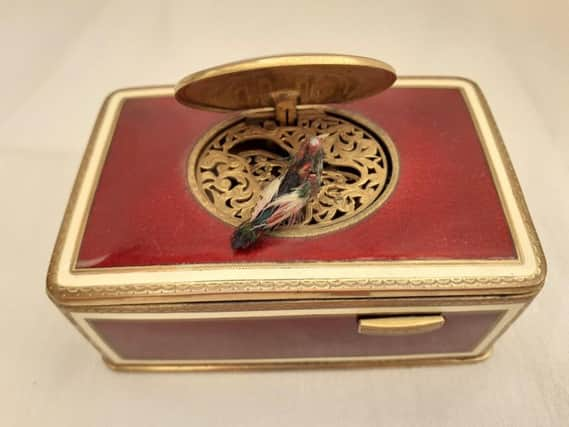Finely crafted boxes are music to the ears of antiques collectors


For those (like myself) with no discernible musical talent, centuries before the wireless, turntable, or iPod, music boxes brought melody into the home.
From about 1750 to 1920 mechanical music was everywhere.
The heart of the music box was a tuned steel comb, whose teeth struck the pins on a rotating spring wound cylinder to produce musical notes, invented in 1796 by Swiss clockmaker Antoine Favre.
Advertisement
Hide AdAdvertisement
Hide AdThe music box became a decorative centrepiece, with mechanical automata bringing a visual element to accompany increasingly complex tunes.
Miniature versions were hidden in snuff boxes inlaid with gold, pearls, and ivory, and even in rings, medallions, and perfume bottles.
Using the skills of different craftspeople to assemble a complete product, early musical contraptions were an expensive luxury item favoured by the aristocracy, primarily playing hymns and operatic songs.
With intricate mechanics and fine decoration, music boxes in good condition today can be hard to find, and priced to match. The dream of discovering a neglected treasure in a dusty corner can be compromised by high restoration costs for decoration or mechanism.
Advertisement
Hide AdAdvertisement
Hide AdEarly rare examples made by loose collectives are especially hard to identify. As manufacturers developed, look for Paillard, who opened the first factory in 1796, Lochmann, Regina, and Brachhausen.
Collectors often specialise in one type of mechanical music such as cylinder or disc, snuff boxes, or novelties such as cigarette lighters that play a tune, ladies’ powder boxes with music, and musical children’s toys known as ‘manivelles’.
I am the fortunate owner of this superb music box from Prague, traditionally a centre of fine craftsmanship. Press a button and a beautiful bird with specially sourced South American feathers pops up to serenade you. Unfortunately, for prospective buyers, it is in my private collection and I love it too much to part with it!
Following Thomas Edison’s invention of the phonograph in 1877, music boxes grew obsolete, with most of the major producers out of business by the early 1910s. Thanks to dedicated collectors and restorers, the surviving examples today present a fascinating picture of society as it was during their heyday.